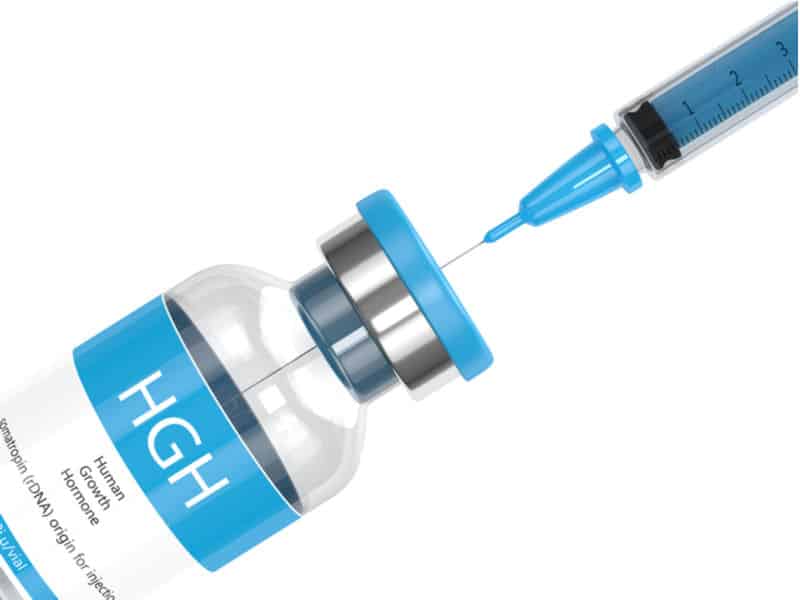The FDA has given the green light to Danish company Ascendis Pharma for the first slow-release formulation that provides a weekly alternative to daily injections for children with growth hormone deficiency.
For decades, patients with growth hormone deficiency have required tedious daily hormone injections to stave off the effects of the rare condition, including slow growth in children and high levels of body fat in adults. However, the last two years have seen approvals of slow-release formulations that reduce the injection requirement to once a week.
Last year, the FDA approved the first weekly slow-release form of growth hormone in adults with growth hormone deficiency: Novo Nordisk’s Sogroya. An EU approval of Sogroya followed earlier this year.
Then last week, Ascendis Pharma received the FDA’s blessing to market its slow-release hormone therapy Skytrofa for growth hormone deficiency — in this case in children. The Danish company’s stocks have soared by 25% since the approval, and an EU decision is expected later this year.
“Long-acting sustained-release technologies have been the holy grail in the delivery of hormones,” said Antoine Papiernik, Chairman and Managing Partner at one of Ascendis’ early investors, Sofinnova Partners. “This has the potential to dramatically improve the lives of patients.”
Meanwhile, Pfizer’s own weekly slow-release candidate Somatrogon is set to compete with Skytrofa in the child form of growth hormone deficiency. The drug is expected to have an FDA approval decision by the end of the year.
Despite the incoming competition, a report by the market research firm GlobalData sees Skytrofa as the dominant player in this indication. This is partly because of its strong phase III performance; children given Skytrofa in the trial grew 0.9 cm per year more than those given daily injections of growth hormone. In contrast, Somatrogon provided the same benefit as daily injections in its own phase III trial.
Another advantage of Ascendis over Pfizer is that reaching the market first provides a time bonus and awareness boost.
“We are first in the pediatric segment coming to the market,” said Jesper Hoiland, Ascendis’ Senior Vice President and Global Chief Commercial Officer, in an investor call last week. “That first mover advantage we will certainly also enjoy in the time to come.”

According to Ascendis, Skytrofa is unusual in that it doesn’t use a modified structure of the growth hormone. Skytrofa locks a form of the hormone inside a protective molecule that inactivates it and prevents it from being broken down by the body. When the drug is injected into the bloodstream, the hormone is then gradually released into the blood to take effect.
Meanwhile, Sogroya uses a genetically modified version of the molecule and Somatrogon fuses growth hormone to a specific peptide to lengthen the time it stays in the bloodstream.
“If you transform the underlying molecule by linking it covalently to something else, which is how a lot of these technologies work, then it becomes a new molecule and it no longer has the same behavior as the parent molecule,” said Papiernik. “This is an important clinical factor, and central from a regulatory perspective.”
“The beauty of Ascendis’ drug delivery technology is that it allows long-acting delivery of a molecule without transforming the nature of that underlying molecule.”
Companies have attempted to market slow-release formulations of growth hormone in the US and EU in the last few decades with limited success.
One example was Genentech and Alkermes, which received FDA approval of the formulation Nutropin Depot for children in 1999. However, a large volume of drug was needed, which in turn required using a large needle that left a lump at the injection site. The product was eventually withdrawn in 2004 due to a lack of profits.
“After 30 years, all patients in Europe and the US … are still being treated with basically the old daily growth hormone that was invented in the 80s,” stated Jan Moller Mikkelsen, President and CEO of Ascendis in last week’s investor call.
On the back of this FDA success, Ascendis has a phase III program testing Skytrofa as a treatment for adults with growth hormone deficiency. The firm is also applying its slow-release technology to treat other hormonal conditions including hypoparathyroidism and achondroplasia.
Additionally, Ascendis is developing its technology to improve the treatment of cancer by releasing medications at a more consistent dose than regular injections. This means the patient receives fewer big drug doses, which can reduce side effects.
With slow-release hormone therapies hitting the market, it seems the technology is beginning to have its moment in the sun. This could benefit other slow-release drug developers such as MedinCell in France. Many stock analysts are confident that Ascendis’ bid to be a leader in the space will succeed.
“It took 14 years to get to where we are now, so you need people who have the drive and stamina to keep going even when there are bumps in the road,” said Papiernik.
Cover image via Anastasiia Slynko. Body text image via Shutterstock





